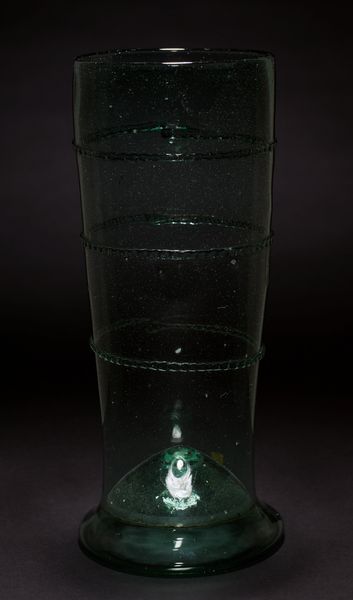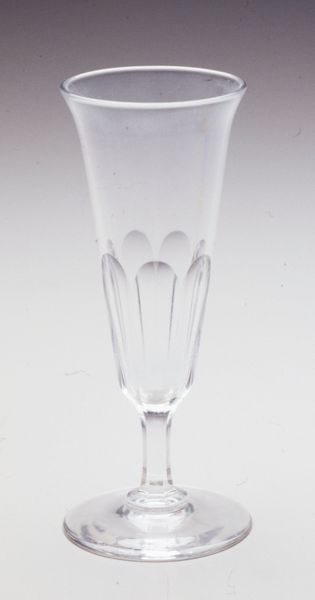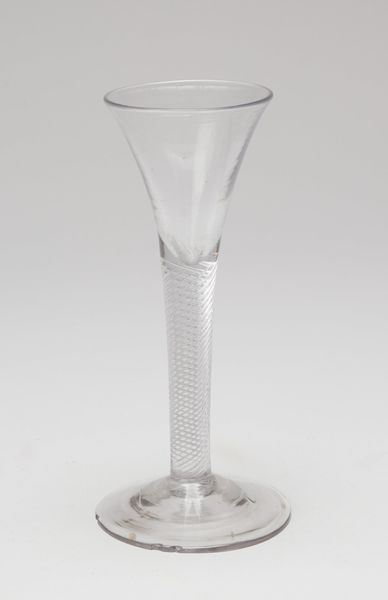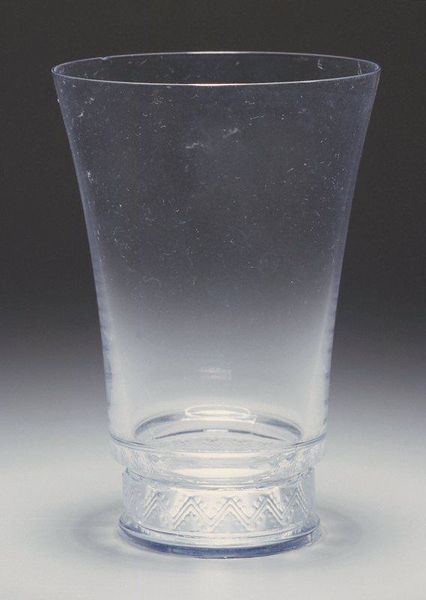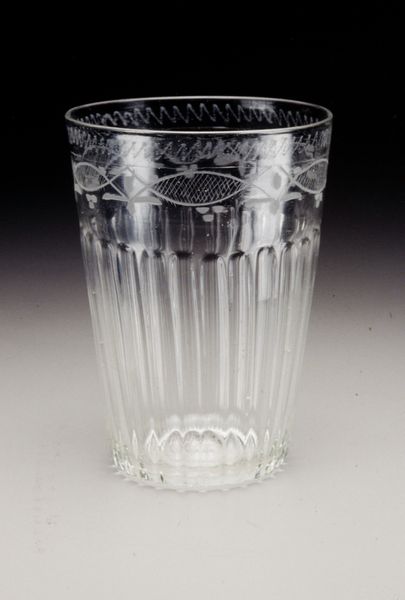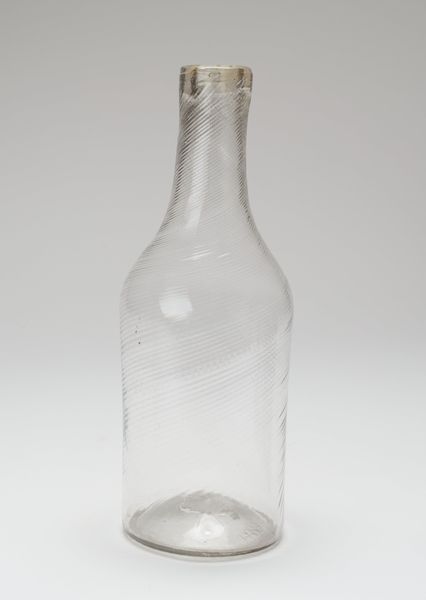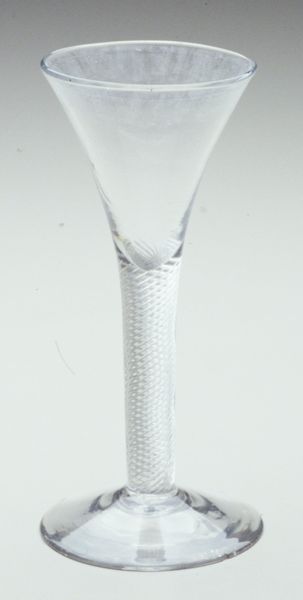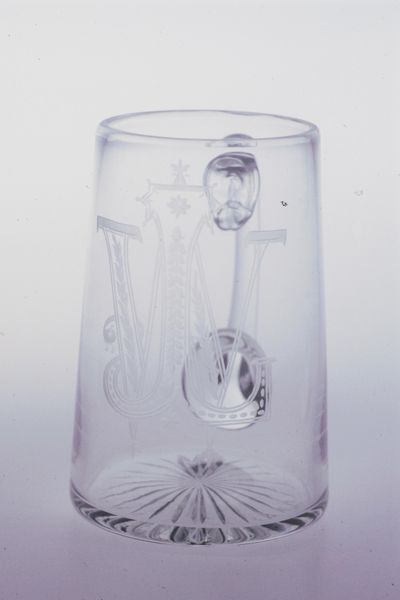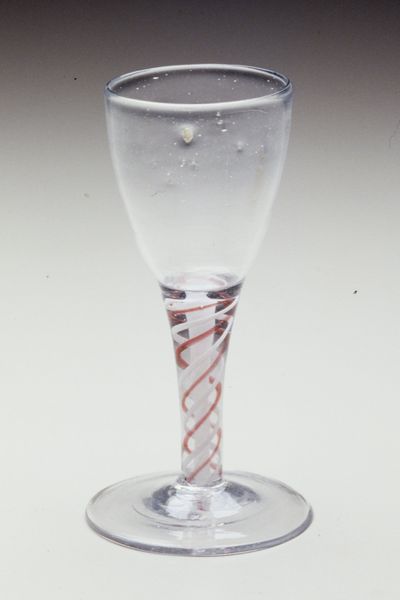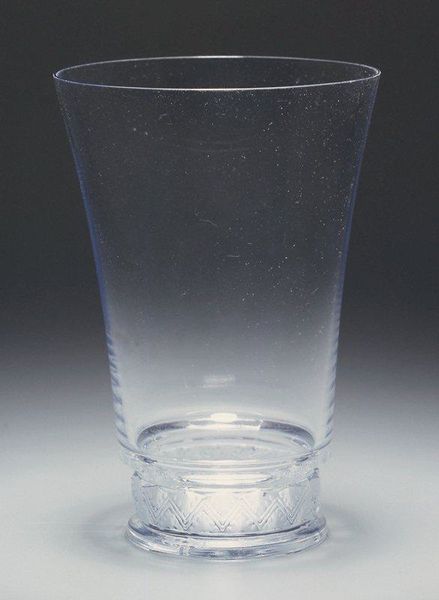
glass
#
11_renaissance
#
glass
Dimensions: 11 × 4 7/8 × 4 13/16 in. (27.94 × 12.38 × 12.22 cm)
Copyright: Public Domain
Editor: Here we have what's called a "Bandwurmglas", a glass object from around the 17th century. The repeating circular bands really catch my eye. What's particularly interesting about this piece from your perspective? Curator: What immediately grabs me is the *labor* involved. Consider the conditions: 17th-century glassmaking was intensive. The anonymous maker isn't just shaping molten glass; they're negotiating intense heat, physically demanding work, and specific techniques to embed these spiraling bands. We should think about the artisan behind this; how many hours of skilled work do you imagine went into creating such an item, especially compared to molded, mass-produced glassware today? Editor: I never really considered the effort of glassmaking back then. Is there significance to those encircling bands of glass, aside from aesthetic appeal? Curator: Definitely. Ask yourself: what does a spiraling form *suggest*? For me, it is about the repetitive actions required to produce it: layering of skill and practice in building knowledge, potentially echoing similar processes from textile production (spinning yarn), for example. This connects high art (specialty glass objects) to wider economies of skill that could be acquired at home or within craft guilds and family enterprises. This glass form probably signified prosperity and special occasions in 17th-century homes, reflecting changing patterns of material culture in those societies. Editor: So it’s more than just decoration. It shows labor, connection to a much wider cultural fabric and economic systems. It prompts us to question the role that handmade things had in that period. Thanks! I never looked at a drinking glass quite like that! Curator: Absolutely, it reminds us to see the art not as existing separate of process. It invites us to really see.
Comments
minneapolisinstituteofart almost 2 years ago
⋮
A Bandwurmglas (literally, a “tape worm glass”) was used for drinking games, wherein the spiral band wrapped around the cylindrical, tapering body would mark positions, from which to which the participants would be required to drink: failing to do so would mean that they had to try again and drink on until the next mark. As participants got more and more intoxicated, the better it was that the spiral wrapped around the glass’s body gave them a firm grip. Yet most of these glasses have been damaged and destroyed, making the surviving examples especially rare.
Join the conversation
Join millions of artists and users on Artera today and experience the ultimate creative platform.
